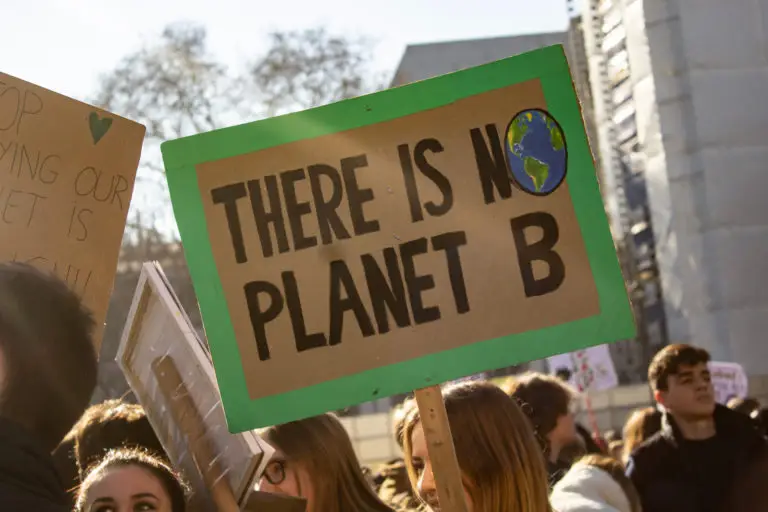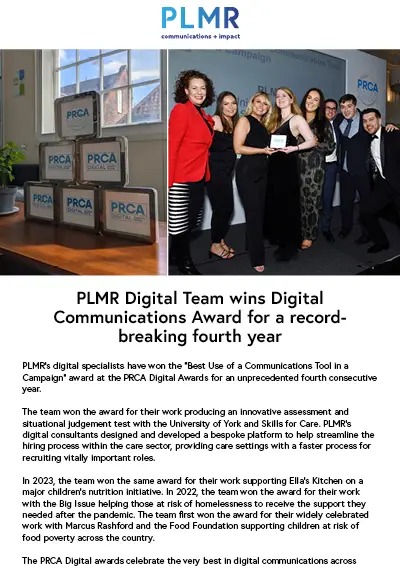Last week was London Climate Action Week. First held in 2019 with think tank E3G’s support, the campaign now attracts attention from well beyond the country’s capital. Organisations vying for space on the green agenda announce their pledges to coincide with the campaign; in theory, this maximises chances of pick-up. The result sometimes sees journalists share their frustration with saturated inboxes and superficial green claims on social media. So, why sell in a green pledge if everyone else is doing it, too?
This year saw many organisations celebrate their commitment to the week-long campaign. A drinks company pledged to use 100 per cent recycled plastic for all its on-the-go bottles in the UK. An agri-food business announced a 30 per cent reduction target on greenhouse gas emissions across its beef supply chain. Biofuel was used at an HS2 site in London as part of a trial of low carbon piling in rail construction.
The legal sector shared its own news, with UK firms joining the Net Zero Lawyers Alliance. In financial services, the Treasury’s £15 billion green gilt issuance will fund net zero-enabling projects. Dissect each announcement if you wish, but the range of announcements and their corresponding headline in national, local or trade publications is more important. It points towards the growing awareness among the media and its consumers that Net Zero requires whole system change.
Are green pledges becoming more quantified?
Data makes commitments tangible by quantifying their scale or impact. Equinor announced plans for 1.8 gigawatts of low carbon hydrogen production in the UK, a tripling of a previous target, through its work on the Zero Carbon Humber industrial cluster. This will be the world’s largest hydrogen and carbon capture usage and storage site of its kind and investment in both technologies is necessary to achieve net zero emissions in hard-to-decarbonise sectors like heavy industry.
Nissan unveiled plans to transform its Sunderland manufacturing plant into an electric vehicle hub and gigafactory, employing a local workforce and announcing an eyewatering £423 million to produce a next generation electric vehicle in the UK. The site will be the first of its kind in the country and shows the green industrial revolution’s potential to create jobs, develop new exportable technologies and encourage investment.
With consumers, the media and politicians becoming more savvy about climate action stories, it is clear that numbers are one of the most effective ways of storytelling and to communicate true impact and scale with authority. That these stories focus on the key tenants of industrial revolution – the jobs, supply chain resilience or economic gains to be had across the country – is a boon, particularly while looking ahead to post-pandemic life and economic recovery.
Why share your news with the media?
Fighting competitors for supremacy on green credentials earns values-based engagement, if not the right to operate, expand and win influence in political or public spheres. How do you gain planning permission for a new gigafactory? By talking about jobs, investment, supply chains – perhaps how you have found a way, on Earth Day, to recycle crucial minerals and components.
Social media remains a powerful tool to communicate stories. Investing in thought leadership or messaging on social media channels certainly has its advantages, namely building your own engaged audience and exercising some control over how your story is told. It may help to sell your core message to your target audience if the story is not first subject to a journalist’s take.
Take Cruachan Power Station, the pumped hydro storage facility under the hollow mountain. If a planning application for expansion is approved, the plant could power as many as one million homes with renewable energy one day, when the grid has no wind or solar supply. Flexibility is complex but thought leadership and social media have kept this project’s audience informed and engaged.
The expansion of Cruachan Power Station is a critical step towards a net zero electricity grid and net zero economy in Scotland and the UK as a whole.
🏞 Explore Cruachan 2 https://t.co/8F0vsZIdhW— Drax (@DraxGroup) June 24, 2021
If the UK Government were to back #EnergyStorage similar to support given to electricity interconnectors with Europe, we could have a greener, cleaner UK, where climate and economic sustainability go hand in hand.#Cruachan #TheHollowMountain #NetZero https://t.co/7AqixYuYwM
— Will Gardiner (@ddwg) July 3, 2021
Social and ‘traditional’ media will both prevail and complement each other as storytelling platforms. Content on Twitter or Instagram can make use of visual and video content in a range of ways an article cannot, and you can hold the pen on final messaging around your story as you share your narrative. The written word, however, or a plain-speaking, factual press release for World Environment Day, can still have a reach far more powerful and trustworthy than a social media post.
PRESS & JOURNAL: Mountains of jobs #TomorrowsPapersToday pic.twitter.com/HsvKXxzpSA
— Neil Henderson (@hendopolis) June 25, 2021




